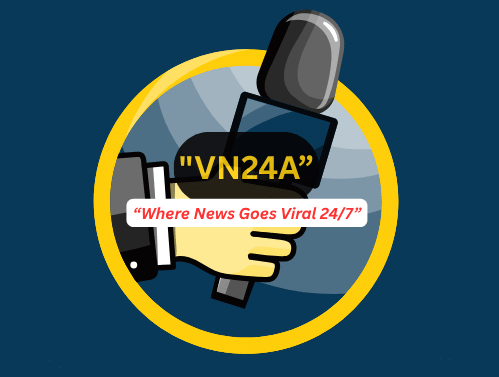Google Gemini Nano Banana Saree AI Trend (2025): Viral Saree Effect, Safety, and Full Guide
Google Gemini Nano Banana Saree AI Trend – Everything You Need to Know (2025)
Meta Description
Discover the viral Google Gemini Nano Banana Saree AI trend taking over social media in 2025. Learn what Gemini Nano is, why it’s called “banana saree,” how it works, privacy risks, watermarking with SynthID, and safety tips before trying it yourself.
Introduction
The world of AI trends is changing faster than ever, and in 2025 one name is making headlines everywhere – the Google Gemini Nano Banana Saree AI effect. From Instagram reels to Twitter (X) threads, people are sharing glamorous AI-generated portraits that transform normal selfies into retro Bollywood-style saree posters or glossy figurine-like images. But what exactly is this Gemini Nano Banana trend? Is it just a harmless craze or something we should approach with caution?

In this detailed guide, we’ll break down:
-
What Google Gemini Nano is
-
Why people are calling it the Nano Banana saree trend
-
How the AI image editing works
-
The difference between the AI meme and real banana fibre sarees
-
Safety, privacy, and deepfake concerns
-
Google’s SynthID watermarking solution
-
A step-by-step guide to try it safely
What is Google Gemini Nano?
Google Gemini is Google’s family of multimodal AI models, designed to handle text, images, audio, and video. It comes in different sizes: Ultra, Pro, and Nano.
-
Gemini Ultra → The largest and most powerful version for complex reasoning.
-
Gemini Pro → Balanced performance for general use.
-
Gemini Nano → A smaller, lightweight version optimized for smartphones and on-device AI tasks.
The Gemini Nano powers quick edits, smart replies, and image transformations without needing heavy cloud servers. This is where the viral saree edits are coming from — fast, creative, and mobile-friendly AI.
Why is it Called “Nano Banana Saree”?
The phrase Nano Banana Saree comes from two different worlds:
-
The AI trend – Internet users nicknamed one of Gemini Nano’s viral image style presets as “banana.” It adds Bollywood-inspired saree aesthetics, with flowing drapes, retro lighting, and poster-like visuals. Some versions also create miniature figurine effects, which users jokingly call the “banana doll look.”
-
Real banana-fibre sarees – On the other hand, there’s an actual textile called banana silk saree made from banana plant fibres. It’s a sustainable, eco-friendly fabric popular in South India. The similarity in names has caused confusion, but the AI trend has nothing to do with real banana sarees.
How Does the Nano Banana Saree Effect Work?
The AI transformation combines multiple techniques:
-
Image-to-image stylization → Applies Bollywood saree aesthetics to your photo.
-
Generative fill & background creation → Adds missing details like saree drapes, lighting, and cinematic backdrops.
-
3D figurine simulation → Some edits make portraits look like collectible toy figurines with glossy finishes.
Google’s Magic Editor, Reimagine tool, and Gemini Nano features power this effect, either directly on Pixel devices or through the Gemini app.
The Viral Popularity of the Saree Trend
Social media users love the trend because:
-
It creates shareable, photogenic portraits within seconds.
-
The Bollywood nostalgia factor appeals to Indian audiences worldwide.
-
It’s easy, free, and accessible on smartphones.
-
The miniature doll effect adds a fun twist compared to normal AI portraits.
Risks and Concerns with AI Saree Trends
While fun, experts have flagged several risks:
-
Identity Manipulation – AI can add or alter facial details, leading to false representations.
-
Privacy Issues – Uploading personal selfies means data might be stored or reused for training.
-
Deepfake Misuse – Once realistic AI saree images exist, they can be misused in fake content.
-
Consent Problems – Editing someone else’s photo without permission is a legal and ethical violation.
Google’s Safety Measures – SynthID Watermarking
To combat misuse, Google introduced SynthID, an invisible digital watermark for AI-generated content.
-
What is SynthID? → A hidden marker inside AI images that signals “this was generated by AI.”
-
SynthID Detector → A tool where users can upload content to check if it contains a watermark.
-
Why it matters → Helps detect fake images, adds accountability, and improves trust in AI content.
Still, watermarking is not foolproof. Bad actors can attempt to remove or bypass it.
How to Try the Google Gemini Nano Banana Saree Effect Safely
If you want to explore the trend without risks, follow these steps:
-
Use official apps only – Stick to Google Gemini App, Pixel’s Magic Editor, or Google Photos Reimagine.
-
Avoid third-party sites – Many fake “banana saree generators” are scams or data traps.
-
Upload safe photos – Never upload government IDs, sensitive documents, or private family pictures.
-
Read data policies – Understand whether your images are stored or used for training.
-
Keep originals safe – Save unedited versions of your photo.
-
Check watermarks – Use SynthID Detector if you need to verify AI generation.
Difference Between Nano Banana Saree & Real Banana Fibre Sarees
It’s important to note the clear difference:
-
Google Gemini Nano Banana Saree → An AI image editing trend creating digital saree portraits.
-
Banana Fibre Saree → A real, eco-friendly textile made from banana stems in South India, promoting sustainability and handloom weaving.
The viral AI trend is digital-only, while the fabric sarees are physical garments.
Final Thoughts
The Google Gemini Nano Banana Saree trend is a perfect example of how AI intersects with culture, fashion, and creativity. It’s entertaining, nostalgic, and visually stunning — but it also comes with privacy and deepfake risks.






